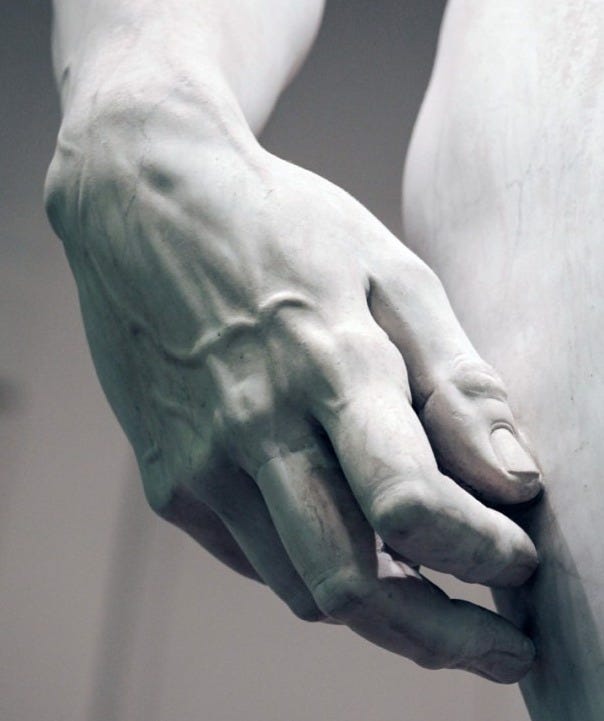Your first draft isn’t your last
The Art of the Edit
What follows isn’t expert advice. It’s lived experience. Lessons learned the hard way. Lessons I’m still learning. Lessons I have to keep reminding myself of.
I’m not a published author in the traditional sense. But I’ve had two short stories published, and my first manuscript was longlisted in a national competition. So while I’m still very much on the journey, I’ve picked up a few things along the way.
I want to be a writer. Not just someone who writes, but someone who writes the kind of stories I’d want to read. The kind that linger. The kind that matters. And that means learning to edit. Not just my words, but my expectations, my ego, and sometimes even my ideas.
I don’t know everything, far from it. But I do know that wisdom can come from unexpected places. A stray comment. A clumsy draft. A critique that stings but sticks. So maybe I can be one of those unexpected places for you. An unlikely source.
If you’re a writer, or want to be, I hope something here helps you shape your story, one draft at a time.
The Myth of the Perfect First Draft
There’s a persistent myth in the writing world that great writers produce great first drafts. It’s seductive—the idea that brilliance flows effortlessly from pen to page, that some people are simply born with the ability to write clean, compelling prose on the first try. But the truth is, most first drafts are chaotic. They’re full of contradictions, half-formed ideas, clunky dialogue, and plot threads that go nowhere. And that’s not a flaw. That’s the process.
The first draft is where you give yourself permission to be messy. It’s where you chase ideas down blind alleys, let characters surprise you, and write scenes that might never make it to the final version. It’s not about getting it right. It’s about getting it down. You’re not building a house—you’re gathering the timber, the nails, the blueprints. The structure comes later.
Believing in the myth of perfection can be paralyzing. Writers stall, not because they lack ideas, but because they’re afraid those ideas won’t come out perfectly formed. They hesitate, revise mid-sentence, delete entire paragraphs before they’ve had a chance to breathe. But the real danger isn’t writing badly—it’s not writing at all.
The first draft is your sandbox. It’s where you play, explore, and make mistakes. It’s where you discover what the story wants to be. And sometimes, it’s only through writing the wrong thing that you find the right one. So let it be rough. Let it be wild. Let it be wrong.

Editing as a Creative Act
Editing is often seen as the tedious part of writing—cutting, correcting, polishing. But it’s actually where the magic happens. It’s where you shape the story, refine the voice, and bring clarity to chaos. Michelangelo famously said he carved away everything that wasn’t David. Editing is just that: revealing the story hidden inside the draft.
It’s not just about fixing mistakes. It’s about making choices. What do you emphasize? What do you cut? What do you rearrange? Editing is storytelling with intention. It’s where your instincts meet your craft
Emotional Distance and Objectivity
One of the hardest parts of editing is detaching from your own words. You’ve poured time and emotion into them. But to revise effectively, you need distance. That might mean stepping away for a few days—or weeks. It might mean printing the draft and reading it somewhere new. The goal is to see the work not as your baby, but as a reader would.
With distance comes clarity. You start to notice pacing issues, character inconsistencies, or scenes that drag. You begin to ask: “Does this serve the story?” And if it doesn’t, you let it go.
Levels of Editing
Editing isn’t one big sweep—it’s layers. First, you tackle the big-picture stuff: structure, pacing, character arcs, theme. Does the story build tension? Do the characters evolve? Is the ending earned? These are macro edits, and they shape the skeleton of your work.
Then come the micro edits: sentence rhythm, word choice, grammar. These are the details that make your prose sing. You might spend an hour tweaking a single paragraph—and that’s okay. Each layer brings you closer to the final form.
Feedback and Collaboration
Writing can feel solitary, but editing thrives on collaboration. A trusted beta reader or editor can see things you’ve missed. They bring fresh eyes and honest reactions. Sometimes their feedback stings—but it’s often exactly what you need.
The key is knowing which feedback to take. Not every suggestion will align with your vision. But if multiple readers stumble over the same scene or question the same character motivation, it’s worth revisiting. Editing isn’t just about fixing—it’s about listening.
Letting Go of Ego
One of the most painful parts of editing is cutting something you love. A clever line, a vivid scene, a character you adore—but if it doesn’t serve the story, it has to go. That’s where ego comes in. You have to ask: “Am I keeping this because it’s good, or because I’m attached to it?”
Letting go is hard. But it’s also freeing. It opens space for stronger choices. And often, the lines you cut find their way into another story. Nothing is wasted.
Revision as Discovery
Sometimes, the real story doesn’t emerge until the second or third draft. You start with one idea, but through revision, you uncover something deeper. A hidden theme. A character’s true motivation. A twist you didn’t see coming.
Revision is a process of discovery. It’s where you ask new questions and follow unexpected paths. The story evolves—and so do you as a writer.
Practical Strategies
So how do you actually edit? There are many paths to success; finding which one works best for you is the challenge.
Here is something I’m trying for the fantasy novellas I’m currently working on. Start with a reverse outline. Summarize each scene and see how they connect. Use color-coded notes to track character arcs or emotional beats. Read your work aloud to catch awkward phrasing. Listen for repetition, dry dialogue, telling. Change the font or format to trick your brain into seeing it fresh.
And most importantly: give yourself time. Editing isn’t a sprint. It’s a slow, deliberate process. But every pass brings you closer to the story you were meant to tell.
Consider hiring an editor for an assessment, not a copyedit or line edit. Ask for structural advice and work your way down again with a professional.
Writing is rewriting. It’s chiselling away at the rough edges until something true emerges. The first draft is the block of marble. Editing is the act of carving. And while it can be frustrating, slow, and sometimes painful, it’s also where the real story begins to take shape.
I’m still learning, still fumbling through drafts and revisions, trying to become the kind of writer I admire. But every time I return to the page, I get a little closer. And if you’re on that same path, I hope something here helps you take your next step.
Whether you’re polishing a short story, revising a novel, or just trying to find your voice, remember: your first draft isn’t your last.
It’s the beginning of something better.
Thanks so much for reading. If you’ve got your own editing tips, tricks, or hard-earned advice, I’d love to hear them. What helps you shape your drafts into something stronger? What lessons have stuck with you? Drop a comment or reply.
Let’s learn from each other.



